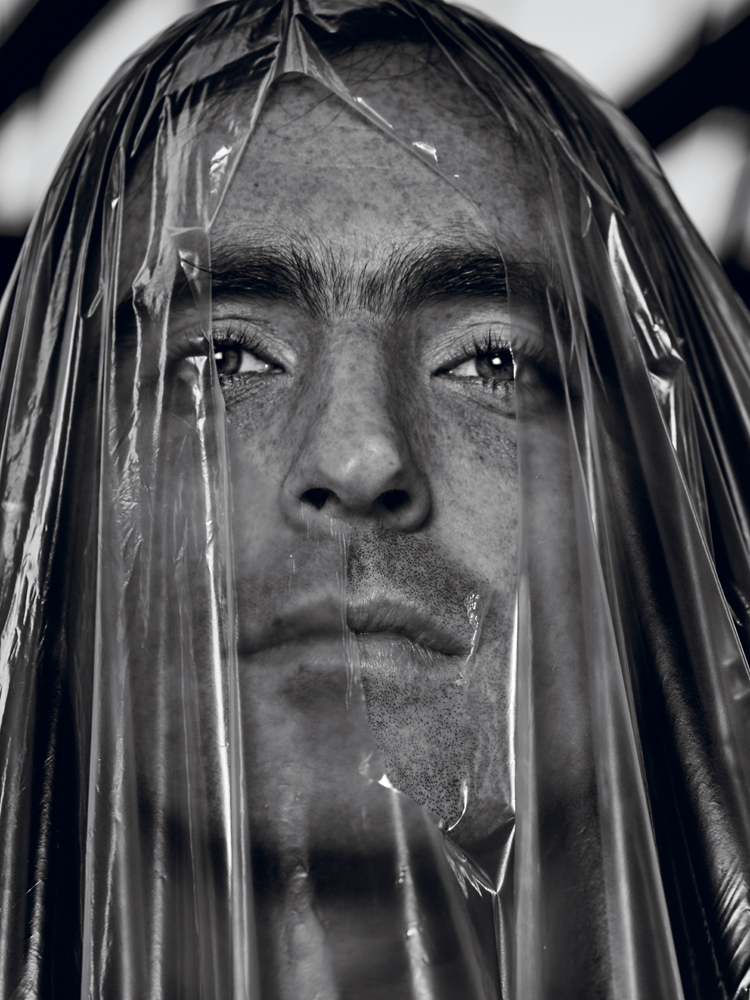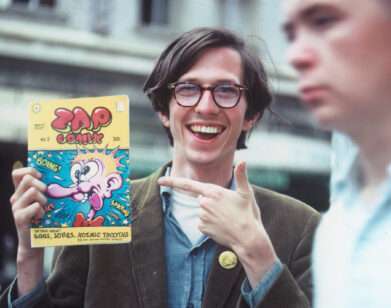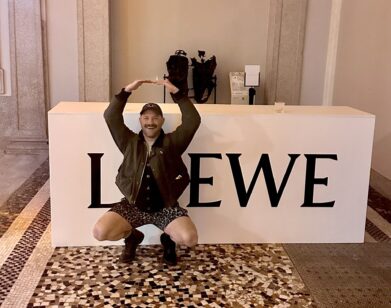Sam Falls
At first sight, Los Angeles-based artist Sam Falls resembles a hippie stoner from central casting. Long-haired and unshaven with a sensitive glint in his eye, the 30-year-old would-be surfer bro has, in fact, catapulted into blue-chip art territory since his 2013 and 2014 shows with Zurich powerhouse Galerie Eva Presenhuber. Nevertheless, he does consider sunshine and raindrops two of his chief mediums. Inspired by the grand tradition of American landscape photography, Falls leaves fabrics, canvases, metal, and other materials outdoors so they can fade, rust, or otherwise record the elements. “This became my way of working with the history of photography without actually using photography,” he says in his studio. “It’s light and time, and it’s a shadow that makes the image.” He points to a series of canvases that hold the reverse imprints of front pages of the Los Angeles Times that were left lying across them in the rain—on those rare mornings when it does rain in L.A.
Weathering given locations is a conceit that applies to Falls’s work as much as it does to his own biography. Born in San Diego, raised in Vermont, and educated in Oregon and later in New York, he arrived in L.A. in 2011, early in the wave of artists now flocking to the fairer coast. Today he lives in a Schindler house on the east side with his wife, the gallerist Erin Falls. His studio, an 11,000-square-foot former knitting factory, is minutes away in Tropico, a pocket of Glendale where artists like Mungo Thomson, Kerry Tribe, and Jordan Wolfson have recently set up shop.
I met him there as he was preparing his solo show that opens this month at Ballroom Marfa, the desert kunsthalle in remote west Texas. “I was dying to do a show in Marfa because I was so interested in minimalism and Donald Judd and outdoor sculpture,” he says. Among the works on view will be a Ford Ranger from 1984, the year of his birth, the interior of which has been used as a planter for succulents; and two works—one a skipping vinyl record and the other a three-hour-forty-minute-long video set in the duration between low and high tides—that ponder the evasive notion of the moment called “now.”
While Falls considers visits to Marfa something of a pilgrimage, he also realizes the more oppressive side of minimalism. “Not just the form or design,” he says, “but the rigid way of thinking that informs them, which actually doesn’t interact with nature. The sculptures are meant to stay perfect and outlive people.” As an homage to the people—and animals—who make up his family, another recent work is a suite of glowing pinkish-orange helium lights, representing the artist, his wife, and their two dogs, floating from suspended helium balloons. Falls’s brand of minimalism is a far more buoyant one.







